
Bold
How to Go Big, Create Wealth and Impact the World
What's it about?
Bold by Peter H. Diamandis is a visionary roadmap for innovators, entrepreneurs, and those seeking to exploit the immense powers of technology. Diamandis reveals how today's exponential technologies—like artificial intelligence, 3D printing, and biotechnology—are enabling individuals and small teams to achieve what was previously possible only for governments and large corporations. Packed with practical advice, this book teaches you how to think big, act boldly, and create wealth while making a significant impact on the world.
About the Author
Peter H. Diamandis is an entrepreneur and author, best known for founding the XPRIZE Foundation and co-founding Singularity University. His writings, including books like "Abundance" and "Bold," focus on innovation, exponential technologies, and the potential for solving humanity's grand challenges. Diamandis emphasizes optimism and the power of incentive competitions.
10 Key Ideas of Bold
Leveraging Exponential Technologies for Massive Growth
Exponential technologies like artificial intelligence, robotics, and digital biology are rapidly advancing, doubling in power or speed every 12 to 24 months.
By incorporating these into your business, you can significantly boost growth, cut costs, and stay ahead of competitors.
This trend follows Moore's Law, which predicts the exponential rise in computing power.
Companies using these technologies can solve problems faster, innovate quickly, and scale solutions globally.
For example, AI can automate tasks, reducing labor costs by up to 30%, while robotics can increase production efficiency by 25%.
Learn DeeperIdentify Exponential Technologies Relevant to Your Field: Start by researching and understanding which exponential technologies are most relevant to your industry. This could be AI for data analysis, robotics for manufacturing, or digital biology for healthcare.
Invest in Learning and Development: Allocate resources for you and your team to learn about these technologies. Online courses, workshops, and seminars can be great ways to build knowledge and skills.
Experiment with Pilot Projects: Implement small-scale projects to explore how these technologies can be integrated into your business processes. This allows you to gauge their impact without committing extensive resources.
Leverage Partnerships and Collaborations: Sometimes, building or acquiring technology capabilities in-house isn't feasible. Look for partnerships with tech companies or startups that can provide the expertise and tools you need.
Stay Agile and Be Ready to Pivot: As you integrate exponential technologies, maintain flexibility in your strategies. The rapid pace of technological change means what works today might need adjustment tomorrow.
- Example
A retail company integrating AI to analyze customer data and personalize shopping experiences, leading to increased customer satisfaction and sales.
- Example
A healthcare provider using digital biology and AI to develop personalized medicine, significantly improving patient outcomes and reducing treatment costs.
Crowdsourcing as a Powerful Tool for Innovation and Problem Solving
Crowdsourcing taps into the public's collective intelligence to solve problems, generate ideas, or meet business goals.
Organizations can access a vast pool of talent and solutions beyond their immediate network.
For example, platforms like Kickstarter have raised over $6 billion from backers worldwide, funding creative projects.
This approach democratizes innovation, allowing people globally to share their expertise and perspectives.
Crowdsourcing accelerates innovation by gathering diverse insights, leading to more creative and effective solutions.
Companies like LEGO have used crowdsourcing to develop new products, showcasing its power in driving innovation.
Learn DeeperIdentify a Challenge or Goal: Start by pinpointing a specific problem you want to solve or a goal you wish to achieve. This could be anything from developing a new product, improving a service, or finding innovative solutions to societal issues.
Choose the Right Platform: Select a crowdsourcing platform that aligns with your objectives. Platforms like Kickstarter can be great for funding creative projects, while Innocentive is tailored towards solving complex scientific and technical challenges.
Craft a Clear and Compelling Call to Action: When you reach out to the crowd, be clear about what you're asking for. Whether it's ideas, solutions, or contributions, make sure your call to action is compelling and easy to understand.
Offer Incentives: Motivate participation by offering rewards. This could range from monetary compensation, recognition, the opportunity to co-create, or even just the intrinsic reward of solving a meaningful problem.
Engage and Collaborate: Once the ideas start flowing in, engage with contributors. Provide feedback, ask questions, and foster a collaborative environment. This not only improves the quality of submissions but also builds a community around your project.
- Example
A tech startup uses a crowdsourcing platform to gather innovative ideas for eco-friendly packaging solutions. They offer a cash prize for the best idea and promise to bring the winning solution to market, giving credit to the contributor.
- Example
A local government launches an online campaign asking citizens for input on how to improve public transportation in the city. Participants are invited to submit their ideas through a dedicated website, with the most viable solutions being implemented and contributors recognized at a public event.
Creating a Bold Vision to Attract the Best Talent and Resources
A bold, compelling vision attracts top talent, investors, and partners.
People are drawn to ambitious projects that promise significant global impact.
By clearly articulating an inspiring vision, leaders can unite a community of passionate individuals.
These individuals are eager to contribute their skills and resources to achieve that vision.
This collective effort can lead to breakthrough innovations and transform industries.
For example, Tesla's vision of sustainable energy has attracted top engineers and investors, driving advancements in electric vehicles and renewable energy.
Learn DeeperDefine Your Vision Clearly: Spend time reflecting on what you want to achieve with your project or business. What impact do you want to make? Write it down in a clear, compelling statement that encapsulates your ambition.
Communicate Your Vision: Share your vision with everyone involved in your project or business. Use storytelling to make it resonate. Whether it's through presentations, social media, or casual conversations, make sure your passion is evident.
Build a Community Around Your Vision: Use platforms like LinkedIn, Twitter, or industry-specific forums to connect with like-minded individuals. Share updates, ask for feedback, and engage with your community regularly to keep the momentum.
Showcase Successes and Learn from Failures: Be transparent about your journey. Celebrate the milestones achieved towards your vision and be open about the setbacks. This honesty not only builds trust but also encourages others to contribute their ideas and solutions.
- Example
Elon Musk's vision of making humanity multi-planetary has attracted top talent and significant investment into SpaceX. His clear articulation of this bold goal has galvanized a community of engineers, scientists, and space enthusiasts.
- Example
The founders of the non-profit charity: water communicated a compelling vision to bring clean and safe drinking water to people in developing countries. By sharing powerful stories and tangible impacts of their projects, they've attracted a vast network of donors, volunteers, and partners.
Utilizing Incentive Competitions to Drive Innovation and Solve Challenges
Incentive competitions provide financial rewards or other incentives for solving specific challenges.
They tap into participants' competitive spirit and creativity, driving innovative solutions.
These competitions are especially effective in fields where traditional research has stalled.
For example, the XPRIZE Foundation offers millions in prizes for breakthroughs in energy and healthcare.
By setting clear goals and offering attractive rewards, organizations can stimulate progress in critical areas.
This approach helps advance their mission or industry, encouraging new ideas and solutions.
Learn DeeperIdentify a Challenge You're Passionate About: Start by pinpointing a problem or challenge in your community or industry that you feel strongly about. This could be anything from environmental conservation to improving local education systems.
Research Existing Incentive Competitions: Look for competitions that are already addressing the challenge you're interested in. Websites like Challenge.gov or XPRIZE list numerous incentive competitions across various fields. This can also help you understand the types of solutions that are being rewarded.
Gather a Team: Innovation often thrives in collaborative environments. Assemble a team of individuals with diverse skills and perspectives. This could include friends, colleagues, or even reaching out to experts in the field who share your passion for the challenge.
Brainstorm Innovative Solutions: With your team, brainstorm potential solutions to the challenge. Encourage creativity and out-of-the-box thinking. Remember, the goal of incentive competitions is to drive innovation, so unconventional ideas are welcome.
Develop a Prototype or Proposal: Depending on the competition's requirements, work with your team to develop a prototype of your solution or a detailed proposal outlining how it addresses the challenge. This will be crucial for entering the competition and showcasing your idea.
Enter Competitions and Seek Feedback: Submit your solution to relevant competitions. Even if you don't win, the feedback received can be invaluable for refining your idea. Additionally, participating in these competitions can provide networking opportunities and expose you to potential investors or partners.
- Example
The Ansari XPRIZE for suborbital spaceflight, which awarded $10 million to the first non-government organization to launch a reusable manned spacecraft into space twice within two weeks. This competition spurred innovation in private space exploration.
- Example
The Hult Prize, which challenges university students worldwide to solve a pressing social issue such as food security, water access, or energy. Teams compete for a chance to win $1 million in seed capital to implement their ideas.
Building Scalable Platforms to Enable Exponential Growth
Scalable platforms, like digital marketplaces or cloud services, enable businesses to grow rapidly without physical limits.
They use network effects, where each new user increases the platform's value, drawing in more users.
By developing scalable solutions, companies can access a global audience, cut marginal costs, and build strong ecosystems around their offerings.
For example, Amazon's marketplace connects millions of buyers and sellers worldwide, while AWS provides scalable cloud solutions to businesses of all sizes.
These platforms demonstrate how scalability can drive exponential growth and global reach.
Learn DeeperIdentify a Niche Market: Start by pinpointing a specific audience or problem that your platform can address. This focus will help you tailor your platform to meet the unique needs of your target users, making it more attractive and valuable.
Leverage Existing Technologies: Utilize cloud computing, APIs, and other existing technologies to build your platform. This approach can significantly reduce development time and costs, allowing you to focus on creating unique value for your users.
Encourage User Participation: Design your platform to encourage user interaction and contribution. This could be through user-generated content, reviews, or social sharing features. Each interaction adds value to your platform, attracting more users.
Implement Scalable Infrastructure: Ensure your platform's infrastructure can handle growth without performance issues. Consider scalable cloud services that can adjust resources based on demand, ensuring a smooth experience for an increasing number of users.
Focus on Network Effects: Create mechanisms within your platform that enhance the value as more users join. This could involve improving personalization, increasing the variety of offerings, or enhancing connectivity among users.
- Example
Airbnb leveraged technology to create a global marketplace for lodging, enabling homeowners to list their spaces and travelers to find unique accommodations. The platform's value increases as more hosts and travelers participate, demonstrating the power of network effects.
- Example
Dropbox created a cloud-based service for file storage and sharing, focusing on simplicity and ease of use. As more people used Dropbox to store and share files, the service became more valuable, encouraging new users to join and existing users to engage more deeply.
Deeper knowledge. Personal growth. Unlocked.
Unlock this book's key ideas and 15M+ more. Learn with quick, impactful summaries.
Read Full SummarySign up and read for free!
Bold Summary: Common Questions
"Bold is actually about a radical, transformative way of achieving success. It is about how to leverage exponential technologies and crowdfunding to go from 'initial concept' to 'world-changing impact or industry dominance' in a faster and cheaper way than traditional methods."
Diamandis and Kotler's insights on exponential technologies and the power of crowdsourcing were truly eye-opening. The concept of "exponential growth vs. linear growth" and its implications for creating disruptive innovations were very thought-provoking. However, at times, the book delves into a level of technical detail that might lose readers not well-versed in technology or entrepreneurship.
Overall, Bold is a fascinating read for anyone interested in understanding how technology is shaping our future and the potential for leveraging these advancements to drive innovation and change. I'd recommend it to those who enjoyed books like Ray Kurzweil's "The Singularity is Near" or Steven Kotler's "The Rise of Superman."
Experience Personalized Book Summaries, Today!
Discover a new way to gain knowledge, and save time.
Sign up for our 7-day trial now.
No Credit Card Needed

Similar Books

Mathematics for Machine Learning
Marc Peter Deisenroth
Clinical Microbiology
Parslow
Medical Laboratory Science Review
Robert R Harr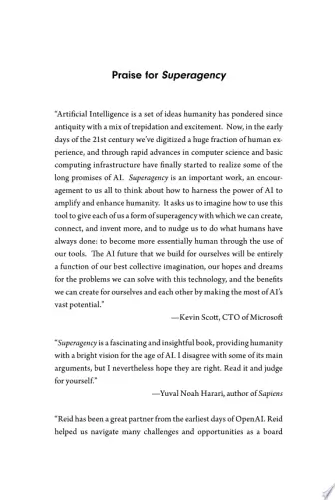
Superagency
Reid Hoffman
Artificial Intelligence
Nicola Acocella
Frankenstein
Mary Shelley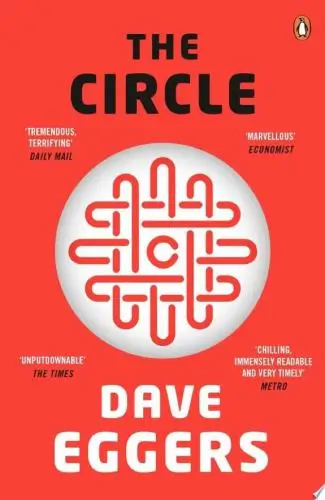
The Circle
Dave Eggers
Roitt's Essential Immunology
Peter J. Delves
Laws of UX
Jon Yablonski
Structures
J. GordonTrending Summaries

Peak
Anders Ericsson
Never Split the Difference
Chris Voss
Smart Brevity
Jim VandeHei
The Psychology of Money
Morgan Housel
The First 90 Days
Michael D. Watkins
Atomic Habits
James Clear
Thinking, Fast and Slow
Daniel Kahneman
The Body Keeps the Score
Bessel van der Kolk M.D.
The Power of Regret
Daniel H. Pink
The Compound Effect
Darren HardyNew Books
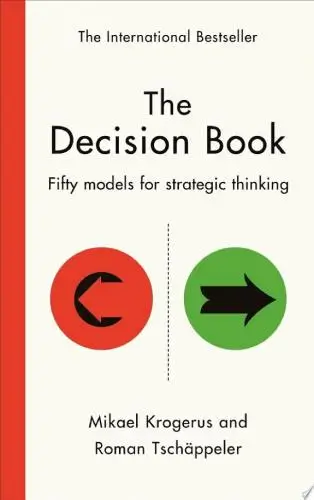
The Decision Book
Mikael Krogerus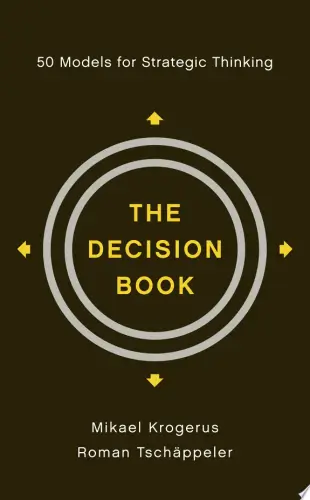
The Decision Book: 50 Models for Strategic Thinking
Mikael Krogerus
Fichte
Johann Gottlieb Fichte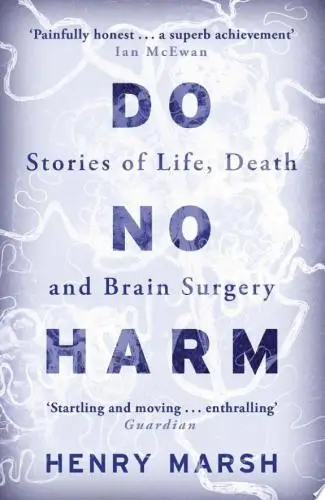
Do No Harm
Henry Marsh
This is Going to Hurt
Adam Kay
This Is Your Brain on Joy
Earl Henslin
Learning Habits
Sarah Nicholl
TOP KNIFE: The Art & Craft of Trauma Surgery
Asher Hirshberg,
English Spirituality
Gordon Mursell
